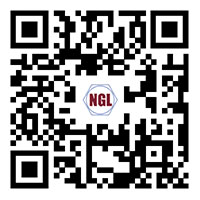What are anchor bolts and how are they classified?
2024-12-07
Anchor bolts are a general term for all post-anchoring components, covering a wide range. According to different raw materials, they are divided into metal anchor bolts and non-metal anchor bolts. According to different anchoring mechanisms, they are divided into expansion anchor bolts, expansion anchor bolts, bonding anchor bolts, concrete screws, nails, concrete nails, etc.
Contents

Brief description
Anchor bolts (anchors) for external insulation are composed of expansion pieces and expansion sleeves, or only expansion sleeves, and rely on the friction generated by expansion or mechanical locking to connect the insulation system to the base wall.
In the installation of external wall insulation panels, in order to make the system safer, various types of anchor bolts (anchors), metal brackets (or angle steel metal brackets) or connectors are often used to assist in strengthening according to the material or finish type of the insulation board.
Anchor bolts are special mechanical connection fixings used to fix hot-dip galvanized welded mesh, alkali-resistant glass fiber mesh or insulation board, and fire isolation belts to the base wall.
Anchor bolts should be made of steel grades with good plasticity such as Q235 steel and Q345 steel, and high-strength steel should not be used. Anchor bolts are non-standard parts, and because of their large diameter, they are often made of unprocessed round steel similar to C-grade bolts, and are not processed by high-precision lathes. Anchor bolts with exposed column feet often use double nuts to prevent loosening.

Classification
(I) Expansion anchor bolts
Expansion anchor bolts, referred to as expansion bolts, use the relative movement of the cone and the expansion piece (or expansion sleeve) to cause the expansion piece to expand, generate expansion and extrusion force with the hole wall concrete, and generate pull-out force through shear friction to achieve anchoring of the connected parts. Expansion anchor bolts are divided into torque control type and displacement control type according to the different expansion force control methods during installation. The former is controlled by torque, and the latter is controlled by displacement.
(II) Hole-enlarging anchor bolts
Hole-enlarging anchor bolts, also known as hole-enlarging bolts or grooved bolts for short, are a component that realizes anchoring of connected parts by regrooving and enlarging the concrete at the bottom of the drilled hole, and using the mechanical interlocking between the concrete pressure-bearing surface formed after the hole enlargement and the expansion head of the anchor bolt. Hole-enlarging anchor bolts are divided into pre-enlarging and self-enlarging according to the different hole enlarging methods. The former uses special drilling tools to pre-groove and enlarge the hole; the latter anchor bolts come with tools, and the grooves and holes are cut and enlarged by themselves during installation, and the groove cutting and installation are completed in one go.
(III) Bonding anchor bolts
Bonding anchor bolts, also known as chemical bonding bolts, or chemical bolts or bonding bolts for short, are a component that uses a special chemical adhesive (anchoring glue) to bond and fix screws and internal threaded pipes in the drilled hole of the concrete substrate, and achieve the bonding and locking effect between the adhesive and the screw and the adhesive and the concrete hole wall to achieve the anchoring of the connected parts.
(IV) Chemical anchor bolts
Chemical anchor bolts include threaded steel bars and long screws, and are a post-anchoring connection technology widely used in my country's engineering industry. The principle of chemical anchoring is the same as that of bonding anchor bolts, but chemical anchoring and long screws are not limited in length, which is similar to the anchoring of cast-in-place concrete steel bars. The failure mode is easy to control and can generally be controlled as the failure of anchor steel. Therefore, it is suitable for the anchoring connection of structural members or non-structural members with static and seismic fortification intensity ≤8.
(V) Concrete screws
The structure and anchoring mechanism of concrete screws are similar to wood screws. They are hard and sharp knife-edge threaded screws rolled and quenched by special processes. When installing, a straight hole with a smaller aperture is pre-drilled first, and then the screw is screwed in. The bite between the thread and the concrete wall of the hole generates a pull-out force to achieve the anchoring of the connected parts.
(VI) Nail shooting
Nailing is a component that uses gunpowder as a power to shoot high-hardness steel nails, including screws, into concrete. The high temperature (900℃) is used to make the steel nails and concrete become one due to chemical sintering and clamping to achieve the anchoring of the connected parts.
(VII) Anchoring glue
The anchoring performance of chemical anchoring and bonding anchor bolts mainly depends on the anchoring glue (also known as adhesive, binder) and the construction method. The most widely used anchoring glue in my country is epoxy-based anchoring glue.


